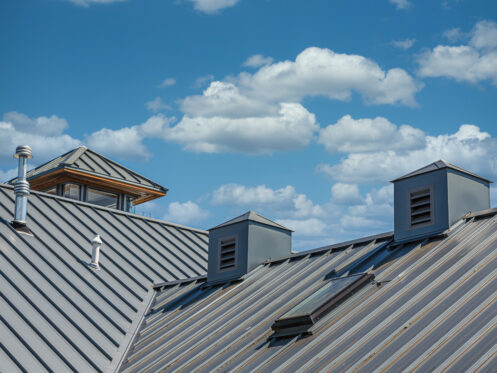Arizona’s relentless sun is a defining feature of the state, but it can wreak havoc on your roof. Prolonged exposure to intense sunlight and high temperatures can lead to significant damage over time. Understanding the impact of the sun on your roof and taking steps to mitigate this damage is crucial for maintaining the longevity and effectiveness of your roofing system.
The Impact of Arizona’s Sun on Your Roof
1. UV Radiation
Ultraviolet (UV) radiation from the sun is a major contributor to roof damage. UV rays break down the chemical bonds in roofing materials, leading to deterioration. This is particularly problematic for asphalt shingles, which can become brittle and crack under prolonged UV exposure. Over time, this can compromise the integrity of your roof, leading to leaks and other issues.
2. Thermal Expansion and Contraction
The extreme heat in Arizona causes roofing materials to expand during the day and contract at night as temperatures drop. This constant expansion and contraction can create stress on the roofing materials, leading to cracks, warping, and other forms of damage. Metal roofing, in particular, can suffer from thermal movement, causing fasteners to loosen and seams to separate.
3. Heat Degradation
Consistently high temperatures can accelerate the aging process of your roof. The heat can cause roofing materials to dry out, lose their flexibility, and become more susceptible to damage. This is especially true for materials like asphalt and wood, which can become brittle and prone to cracking and splitting.
How to Mitigate Sun Damage
1. Choose the Right Roofing Material
Selecting roofing materials that are designed to withstand high temperatures and UV radiation is crucial in Arizona. Consider materials like tile, metal, or reflective shingles that are more resistant to heat and UV damage. These materials can help extend the lifespan of your roof and provide better protection against the harsh sun.
2. Apply Reflective Coatings
Reflective coatings can significantly reduce the amount of heat absorbed by your roof. These coatings reflect a large portion of the sun’s rays, keeping your roof cooler and reducing thermal stress. This not only helps protect your roofing materials but also improves the energy efficiency of your home by reducing cooling costs.
3. Regular Maintenance and Inspections
Regular roof inspections and maintenance are essential to identify and address potential issues before they become major problems. Schedule inspections at least twice a year, and promptly repair any signs of damage, such as cracked shingles, loose fasteners, or deteriorated seals. Keeping your roof in good condition can prevent minor issues from escalating into costly repairs.
Arizona’s sun can take a significant toll on your roof, but with the right materials, protective measures, and regular maintenance, you can mitigate the damage and extend the lifespan of your roofing system. At Desert State Roofing, we specialize in commercial and residential roofing solutions designed to withstand Arizona’s harsh climate. Contact us today to learn more about how we can help protect your roof from sun damage and ensure the longevity of your home.

